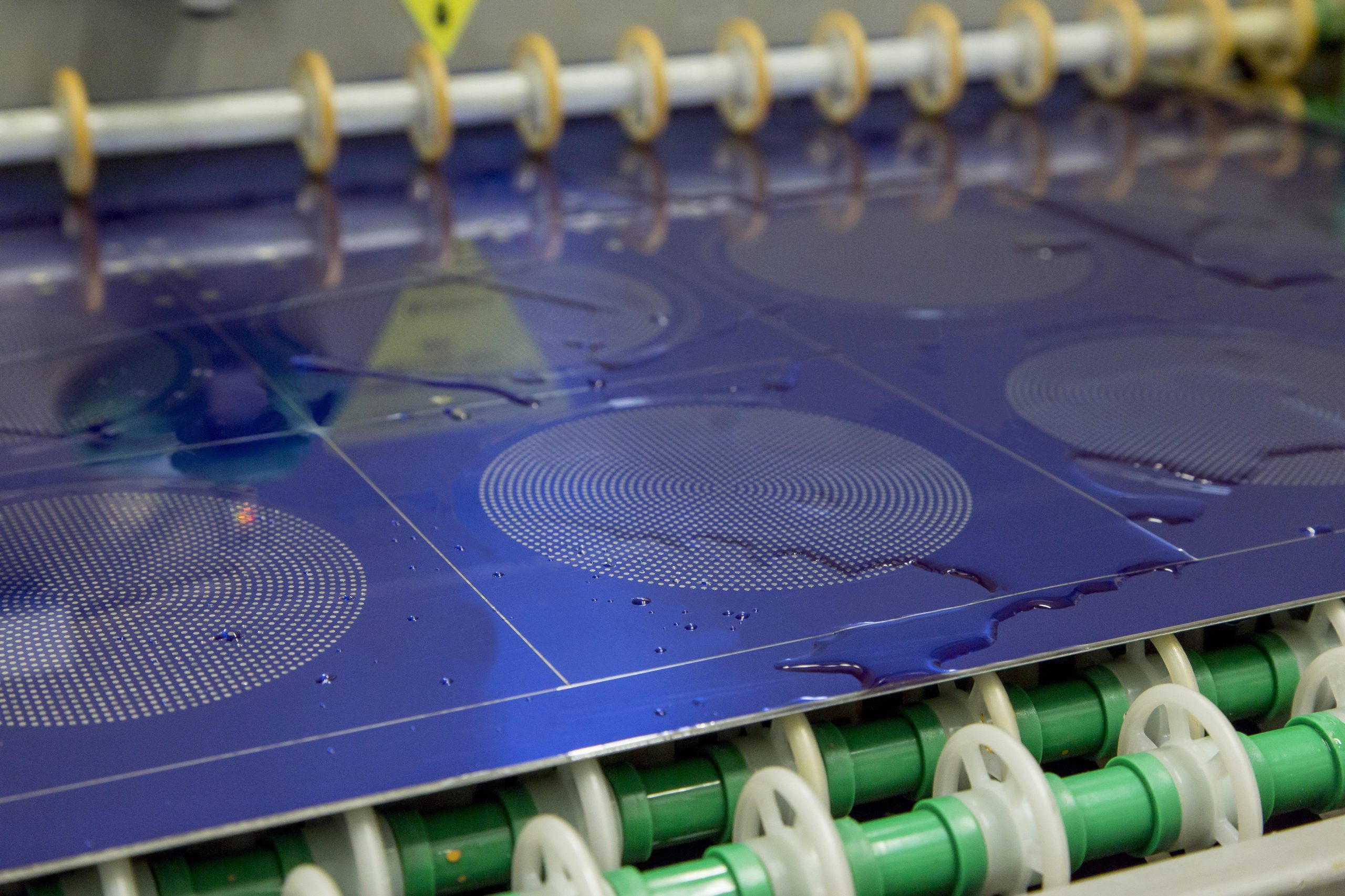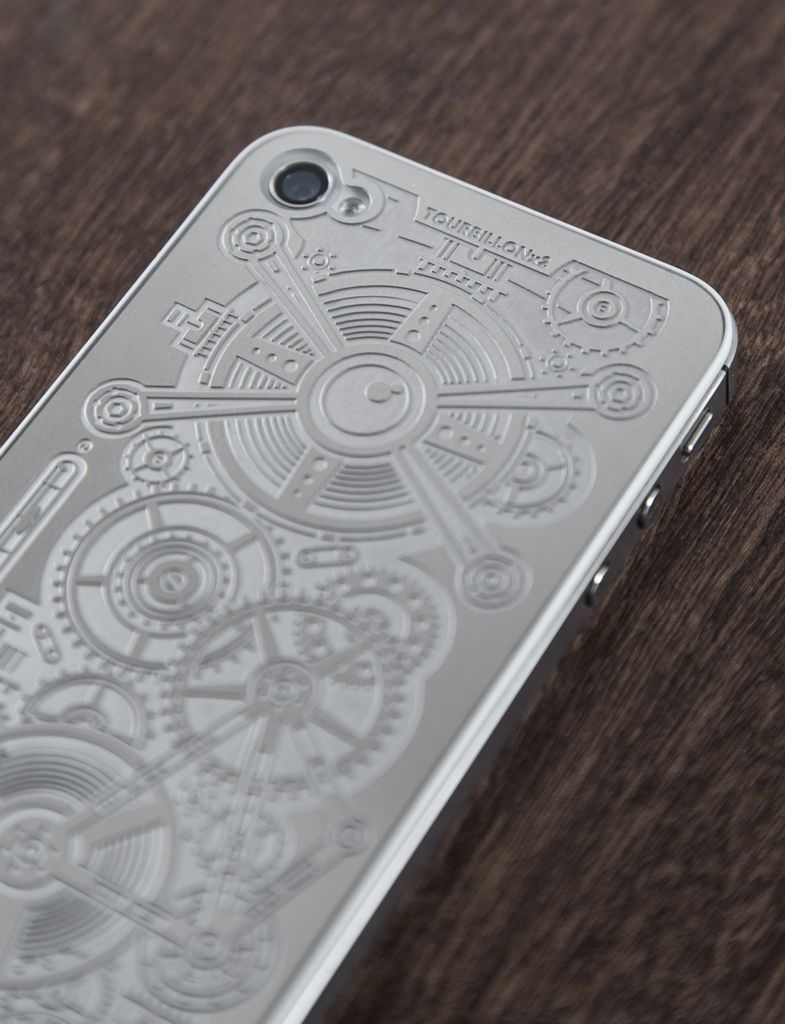Do you see beautiful designs and patterns on the back of your stainless steel pans or accessories and wonder how it got there? Stainless steel etching is what contributes to engraving and indenting metal products with intricate designs and meticulous patterns.
Metal etching is an age-old process, that goldsmiths used initially for crafting designs on their products. The basic purpose of etching is still the same as it was years ago. However, now it has the support of the 21st technology which has made this process more efficient and precise.

Stainless steel etching is prevalent today because stainless steel is the most promising candidate for the etching process. In this article, we will discuss the top three types of stainless steel etching processes.
Stainless steel etching is a process that uses corrosive chemicals, high-energy laser, or electricity to dissolve and remove metals from the desired area to create a specific design.
The etchants used in the stainless steel etching process remove the metal from the surface which they come in contact with and leave the metal sheet engraved.
Chemical etching is the most common type of etching. However, other etching techniques such as laser-etching and photo-etching are also not uncommon.
Chemical, electro-, or laser, no matter what etching technique you use, the result is always consistent. And you get highly intricate designs and complex components engraved on the metal sheet in no time.
The technique used to remove metal from the surface of the substrate determines the type of stainless steel etching.
There are three etchants that stainless steel etching process may use, these include high-energy-density laser for laser etching, electrolysis process for electro etching, and acidic chemical etchants for chemical etching.
Let’s look into each one of these processes in a little more detail.
Laser etching comes under the umbrella of laser marking which also covers other laser-removal processes such as laser engraving and laser annealing.
This stainless steel etching uses high energy density laser light. This laser light focuses sharply on the area which you want to engrave. Ensuring that the surrounding areas do not get damaged.
High energy laser strikes the metal surface, some of the light reflects off but the metal surface absorbs the rest of it in the form of heat. In this way, the laser light heats the metal and melts away the parts where it hits. Thereby, etching the areas on which it acts and creating the required design or pattern.
Laser etching can create identification and traceability marks on metals. However, you may also use it to create aesthetic designs.
Laser marking is capable of engraving metals over a wide range of depths. It can etch away metals with a depth ranging from 0.0001 inches to 0.005 inches.
Laser etching is highly precise like all etching processes are. However, one downside to this process is that because it heats the metals, it may lead to discoloration. Moreover, the heat from the laser light can also induce thermal stress in the metal sheets.
Electrolytic etching, also known as electrochemical etching, is another etching process that leaves permanent engraves onto the metal surface and uses electricity.
The main contributors to the to electro-etching process are an anode, a cathode, and a chemical electrolyte, hence the name, electrochemical etching.
While doing electrolytic etching, etchers cover the area around the etching zone with a non-conductive tape to prevent that area from depleting.
One part of the metal which is to be etched is connected to the positive pole of a DC source, which becomes the anode. While another part of it is connected to the negative terminal of the DC source which we call the cathode. The metal is dipped into the electrolyte to provide a medium for the passage of current.
When the DC source is switched on, the current passes from the anode to the cathode via the electrolyte. The cations from the anode discharge and deposit on the cathode. The depletion of the anode side in this manner leads to the creation of an etched surface on the metal.
Electrolytic etching, like all other etching processes, is a permanent process for creating marks and indentations. Since it relies on electrical conductivity, hence you can only perform this type of etching on metal. Therefore, some etchers often prefer electrolytic etching for stainless steel etching.
Chemical etching is the most common type of stainless steel etching. It uses an acidic chemical that etches of the surface that it acts on.
There are two types of chemical etching, that we will discuss shortly. However, it is important to note that both types of chemical etching have the same basic working principle.
For chemical etching, a sheet of metal is first coated with a layer of some chemical-resistant material. Then, etchers scratch or remove the acid-resistant material in areas that they need to etch. After which, they dip the metal sheet into an acid bath or spray the acid on the metal. The acid etches the metal away and creates the required design.
The acids that etchers mostly use for chemical etching include Hydrochloric acid, Sulphuric acid, and Nitric acid. However, some etcher dissolves powdered chemicals into the water to make etchants such as Ferric Chloride or Copper Sulfate.
As we mentioned above, there are two types of chemical etching processes. These include Photoetching and Manual etching.
In photochemical etching, etchers laminate the metal surface that needs etching with a photo resistive film. And in the case of a negative photoresist, cover the etching area with the pattern.
This process begins with cleaning the metal sheet thoroughly to remove any dirt or grease from it. Cleaning the metal surface is critical because it aids in the lamination of the photoresist film.
After laminating the metal with photo resist film, they expose the photoresist-coated metal sheet to UV lights. UV rays change the composition of the photoresist film and make it insoluble to the developer.
While the film on the unexposed area dissolves in the developer, which is applied after light treatment, leaving behind raw material that is susceptible to acid’s corrosiveness.
After the etchers have developed the metal sheet, it's time for the actual etching. Pumps and spray mechanism come in action to spray acid on the metal sheet which etches away the raw metallic area which was left unexposed to UV light. Thereby creating the required design.
After etching, etchers remove the photo resistive layer from the not-etched part and clean it before sending the etched metal sheet for inspection and finishing.
Manual etching differs from photochemical etching in that it does not require UV light to ‘scratch’ the etching area.
In manual etching, etchers coat the metal sheet with a waxy, acid-resistive substance called ground. Then, they scratch the etching design on the ground and remove the acid resistive substance from where the etching is to be done.
After removing the ground from the desired areas, etchers dip the metal sheet into an acid bath or spray acid over it. The acid erodes and etches the metal away, leaving the required pattern or design in its wake.
While all three of the stainless steel etching technique are better than other alternatives for engraving and designing metal parts, chemical etching beats laser and electrolytic etching for many reasons.
The chemical etching does not induce thermal or mechanical stress on the metal, as laser and electrochemical etching might do. Moreover, chemical etching is flexible and can be used for engraving all sorts of patterns, logos, alphabets, and numbers with high precision.

Stainless steel etching is a safe and prompt procedure for designing and engraving metals with logos, typography, numbers, and whatnot. Moreover, unlike its alternatives, it offers ultimate precision without requiring any post-procedure finishing.
There are three common types of etching. These include chemical, laser, and electrochemical etching. While laser and electrochemical etching also lead to promising results. Chemical etching outshines them because it is highly-precise, safe for the material, and does not alter the properties of the metal.
For More Information, Contact Us Today!
